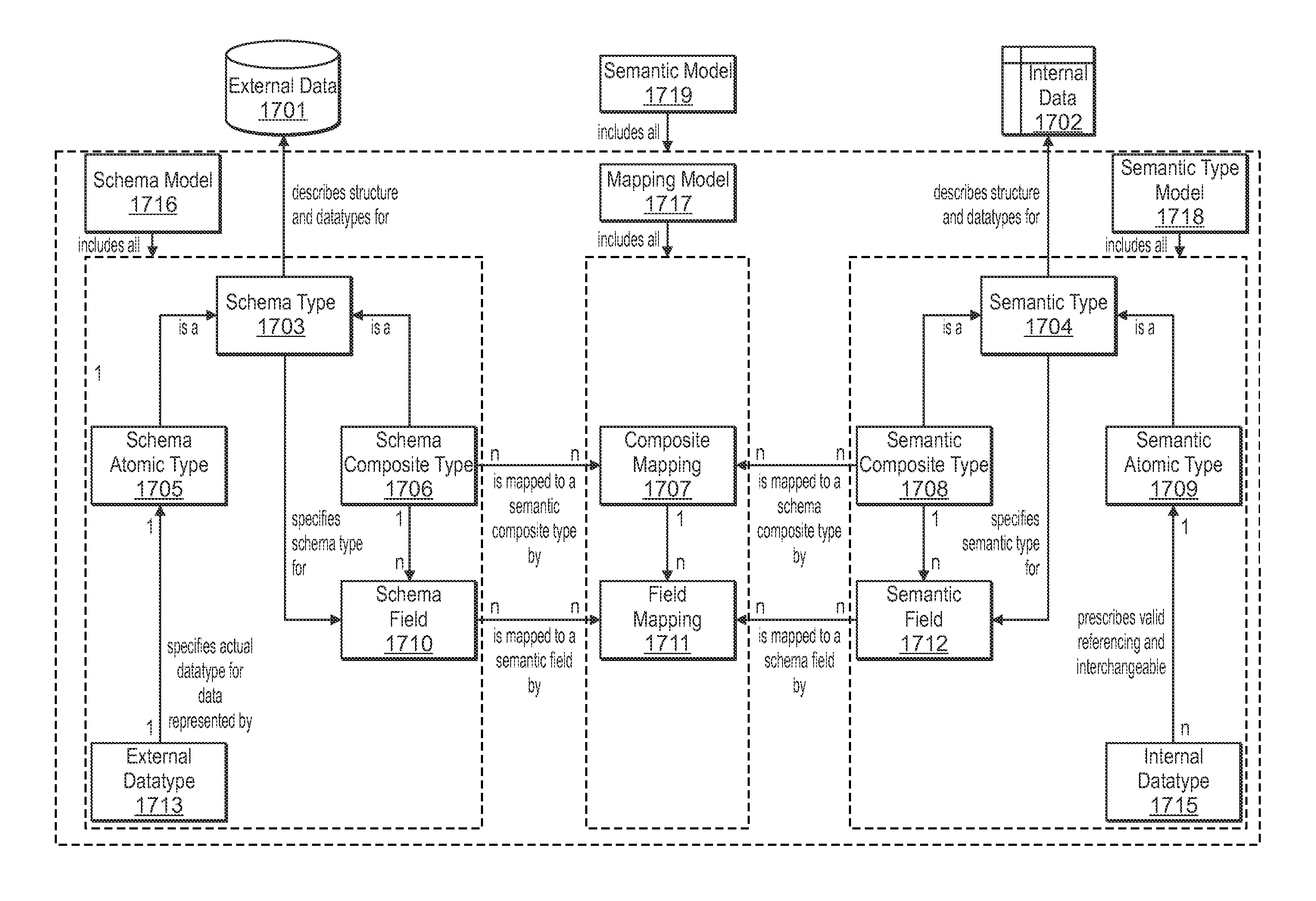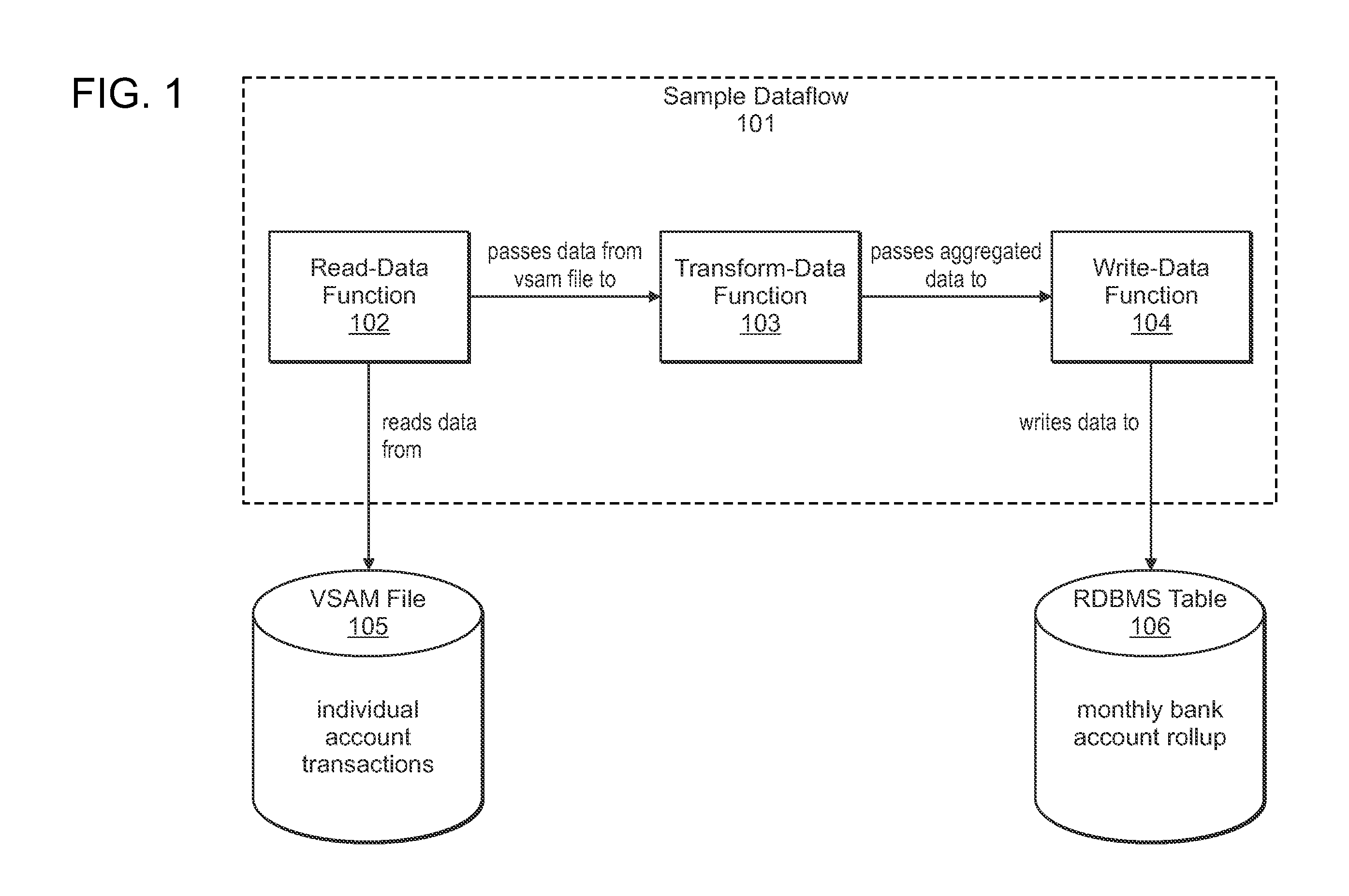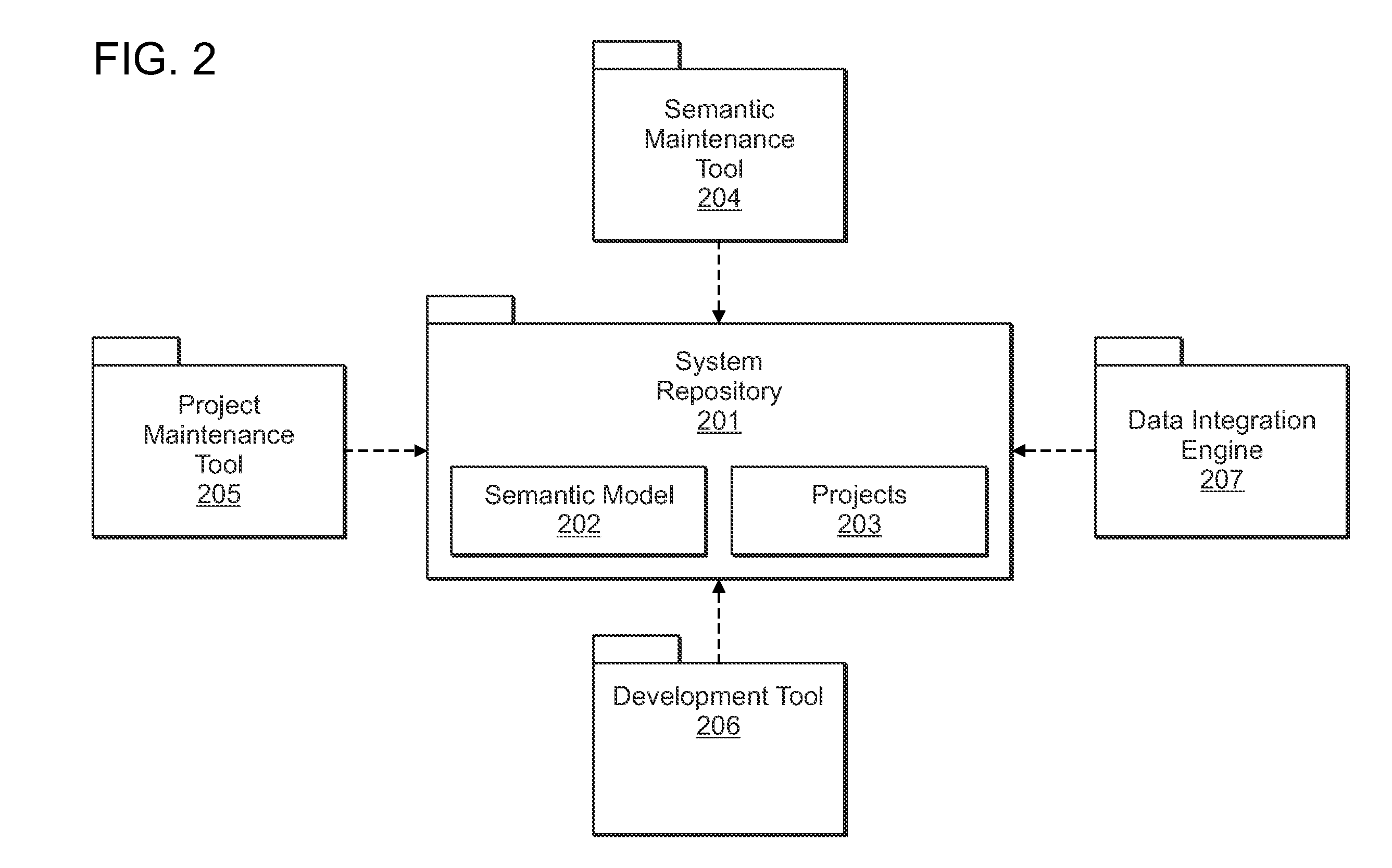Method and system for developing data integration applications with reusable semantic types to represent and process application data
a data integration and semantic type technology, applied in the field of data integration applications, can solve the problems of large downtime, data migration applications consume valuable resources, and the process, and achieve the effect of reducing costs and risks
- Summary
- Abstract
- Description
- Claims
- Application Information
AI Technical Summary
Benefits of technology
Problems solved by technology
Method used
Image
Examples
Embodiment Construction
I. Introduction
[0048]Preferred embodiments of the present invention provide semantic systems and methods for developing, deploying, running, maintaining, and analyzing data integration applications and environments.
[0049]Those data integration applications that are relevant to the techniques described herein are broadly described by the class of applications concerned with the movement and transformation of data between systems and commonly represented by, but not limited to: data warehousing or ETL (extract-transform-load) applications, data profiling and data quality applications, and data migration applications that are concerned with moving data from old to new systems.
[0050]Data integration applications developed and maintained using these techniques are developed using a semantic model. A semantic development model enables a significant portion of an application to be developed without knowledge of the identities and types of the physical data being integrated. The parts of th...
PUM
 Login to View More
Login to View More Abstract
Description
Claims
Application Information
 Login to View More
Login to View More - R&D
- Intellectual Property
- Life Sciences
- Materials
- Tech Scout
- Unparalleled Data Quality
- Higher Quality Content
- 60% Fewer Hallucinations
Browse by: Latest US Patents, China's latest patents, Technical Efficacy Thesaurus, Application Domain, Technology Topic, Popular Technical Reports.
© 2025 PatSnap. All rights reserved.Legal|Privacy policy|Modern Slavery Act Transparency Statement|Sitemap|About US| Contact US: help@patsnap.com



